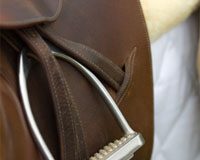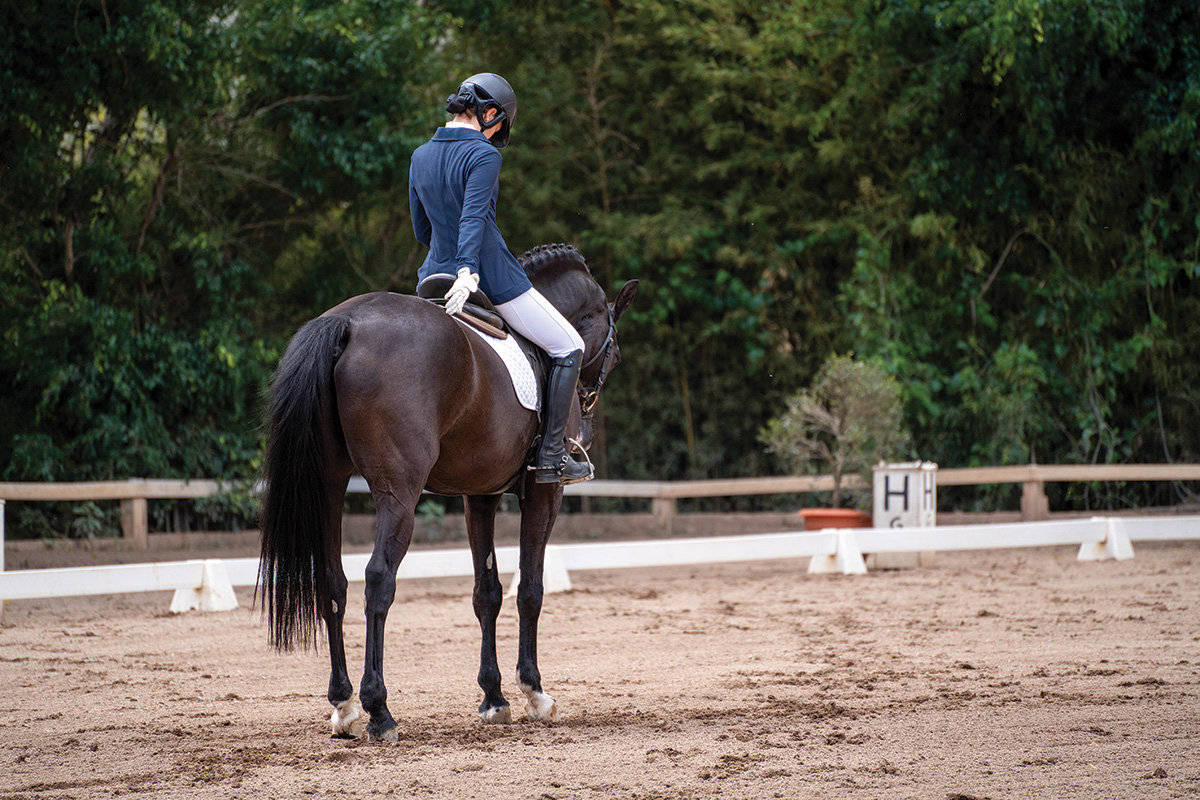
There are places in every dressage test where even the humblest mount can score just as well as—or better than—the fanciest horse. They are the “non-brilliant movements,” of dressage so called because the gaits play little to no role in how they are ridden and judged. Frequently overlooked in daily schooling, these elements offer the clever rider the opportunity to gain a competitive edge—and they’re also good basic training, whether you choose to show or not. So let’s learn how to polish up these non-brilliant gems until they sparkle.
The Non-Brilliant Dressage Movements
Halts, rein-backs, and turns on the haunches are called non-brilliant because “there is no impulsion in any of these movements,” says Eliza Sydnor Romm, an FEI-level trainer/competitor and U.S. Dressage Federation-certified instructor through Fourth Level from Chapel Hill, N.C.
“Impulsion is what pushes the horse up off the ground and then gives him ‘air time’ in suspension in a beautiful trot or a big, bounding canter. But what the judge is judging in a halt is the straightness, the squareness, the connection, and the line of travel. There are not more points awarded for a fancy-moving horse halting than an average-moving horse halting.”
The same goes for the rein-back. The judge wants to see the horse halt square (with his weight distributed evenly over all four legs), then take the prescribed number of steps backward with diagonal pairs of legs, deliberately and in balance, then moving off promptly. These elements and movements may not be thrilling to watch, but they are great tests of your dressage training.
“If you can have it be really reliable, then by definition the horse is truly on your aids,” Romm says of the rein-back. “That’s an impressive thing to a judge, even if it’s not a fancy-moving horse.”
Romm has a lot of experience using the non-brilliant movements of dressage to her advantage.
“I grew up riding and showing this little Quarter Horse that we bought from my farrier for $1,000,” she says. “He was endlessly patient and had a wonderful disposition, but he was a really bad mover! I showed him all the way through Third Level, and he was never going to get more than a 5 or maybe a 6 for his medium trot. But we could halt for a 10 every time, and we could rein back for a 10, and we could do the turns on the haunches for a 10. And with that, at Training and First Level, we could score in the mid to high 60s. We’d often get 9s for our halts. I’d almost always get 8s on our turns on the haunches. So I’m very familiar with trying to do this.”
Romm shares strategies for honing the halt and rein-back to make these dressage movements reliable staples that you can confidently nail every time.
Improving the Halt
From the ground or in the saddle, establish an active walk and then ask your horse to halt. A helper on the ground can tell you whether your horse is square (over time you’ll learn to feel it), or you can use a mirror, your horse’s shadow, or even that old standby, leaning over and looking.
Give a nudge with your leg or a gentle tap with the whip on the side of the errant hind leg to ask your horse to square up. Never settle for a crooked, sloppy halt, and halting square will eventually become automatic.
Be picky about straightness when it comes to this dressage movement, too.
“That will probably dictate whether the horse will halt square,” says Romm. “It will definitely not be square if he is very crooked.”
Focus on maintaining balance into the halt (“land like a snowflake,” as some put it—you shouldn’t need to haul on the reins), keeping in mind that at both Introductory and Training Levels, you may execute the trot-halt transition through a few steps of walk.
In the dressage ring, especially if your horse is antsy, riding the established, familiar sequence of aids will help to settle him in the halt, Romm says. You should know by now which hind leg he tends to leave out behind, “so you can specifically half-halt that hind leg to try to bring it under.”
That said, a balanced, immobile halt—at least three seconds when performed with a salute—trumps all else, so don’t fiddle too much if your horse doesn’t halt square. Show immobility prior to the salute.
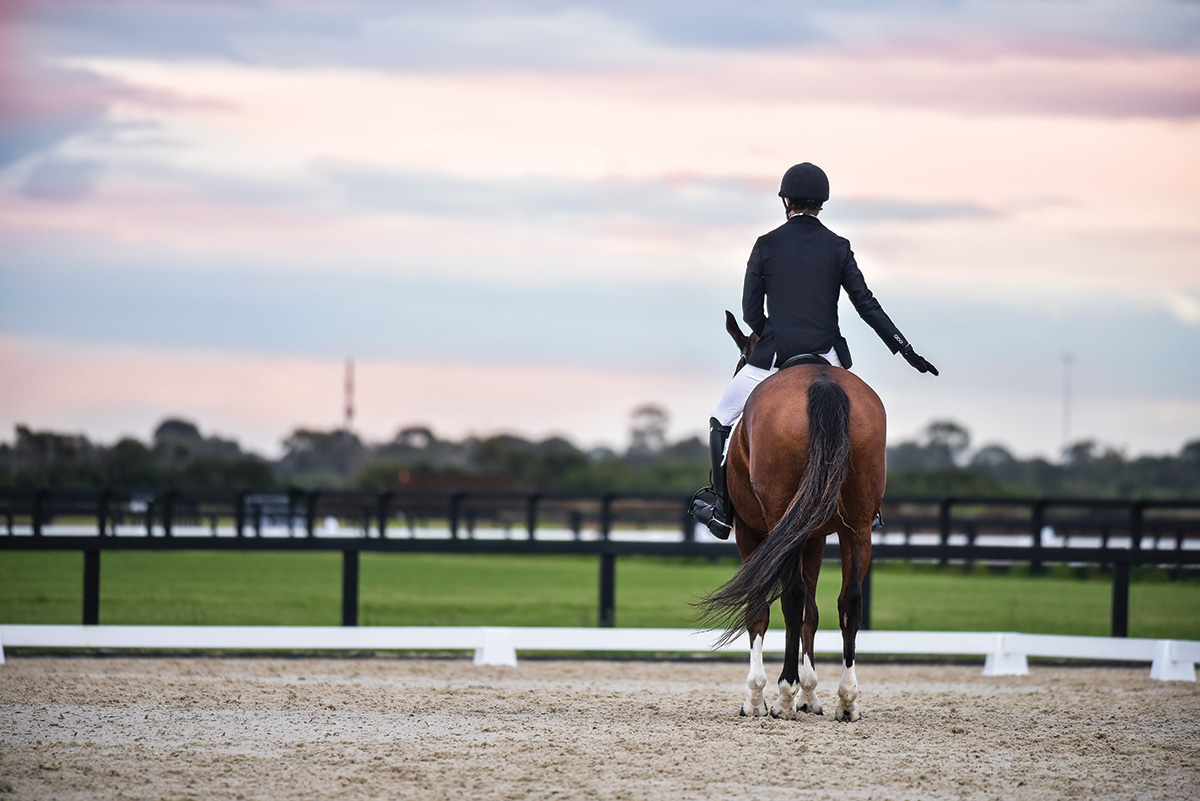
Romm gives one big inhale-exhale before she takes a hand off the reins, and she incorporates the use of her breath in the daily training so that her horses associate it with a moment to relax and stand quietly at attention.
“It’s usually easier to ride a balanced halt if you sit the last few steps of the trot into the halt,” Romm advises Intro and Training Level riders. “However, if you can’t keep your seat balanced in sitting trot, then do it from posting trot and walk two to three steps, then halt.”
Improving the Rein-Back
If your horse doesn’t know how to rein back, Romm recommends teaching him from the ground so you’re not pulling on the reins. From a balanced, square halt, place one hand on your horse’s chest and apply pressure (or gently tap his chest with the butt end of a whip) as you repeat the vocal cue “back.”
The word will serve as a bridge when you introduce the rein-back from the saddle, lightening your seat and sliding your legs back a bit as you give little squeezes first with one rein and then the other—don’t pull back with both reins simultaneously, and never pull back hard. Overuse of the reins also causes the horse to invert his neck, which creates a hollow back and loss of the correct diagonal pairs of footfalls.
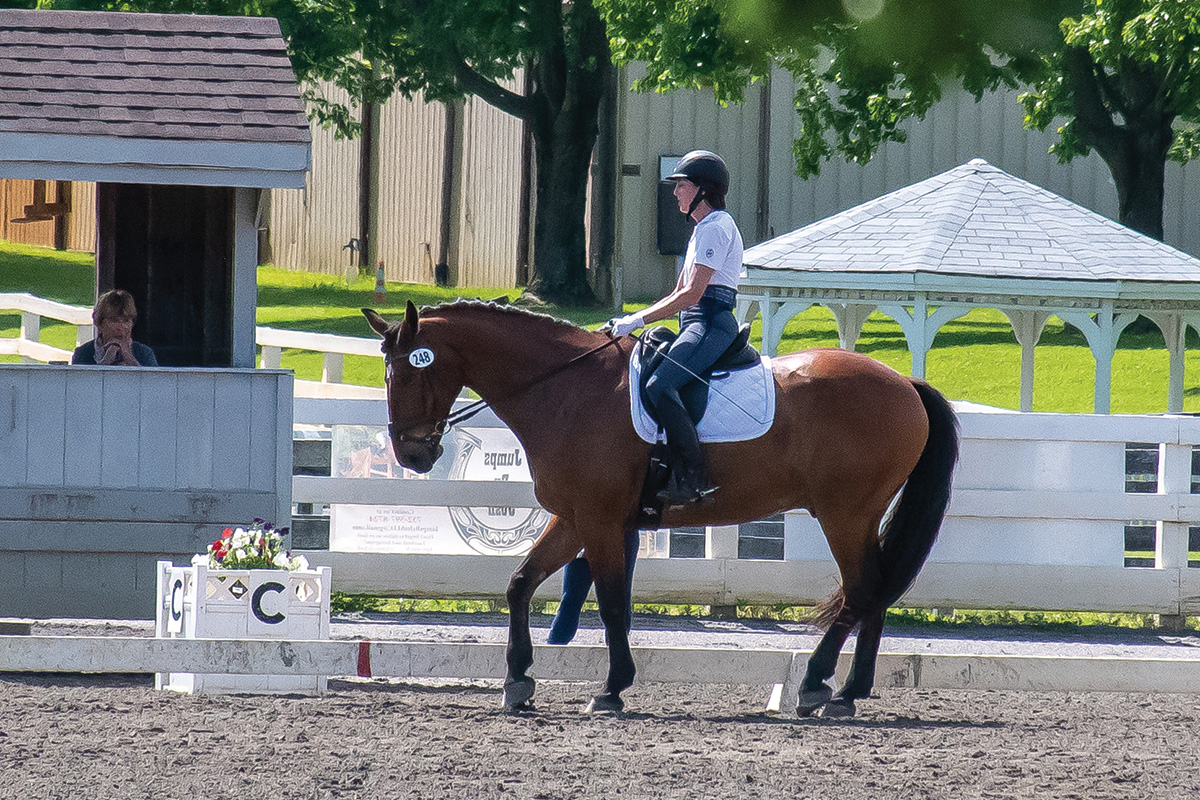
The rules don’t require the horse to remain immobile for three seconds before reining back, but the halt must be “established” prior to the rein-back, Romm points out, so no boomeranging backward.
Accurate Riding in Your Dressage Movements
Every aspect of a dressage test contains a non-brilliant element, according to Romm: the accuracy of your figures and the accuracy of your transitions. Even if your horse’s gaits aren’t spectacular, you’ll raise your scores if you show spot-on geometry and balanced, at-the-letter transitions.
“At Intro and Training Levels, the judges are thrilled to see an accurate 20-meter circle,” she says. Other elements that can get a boost from super-accurate riding are the Training and First Level trot “stretching circle” and the free walk, both of which have a coefficient of 2 (meaning the score is double relative to all the other movements in the dressage test).
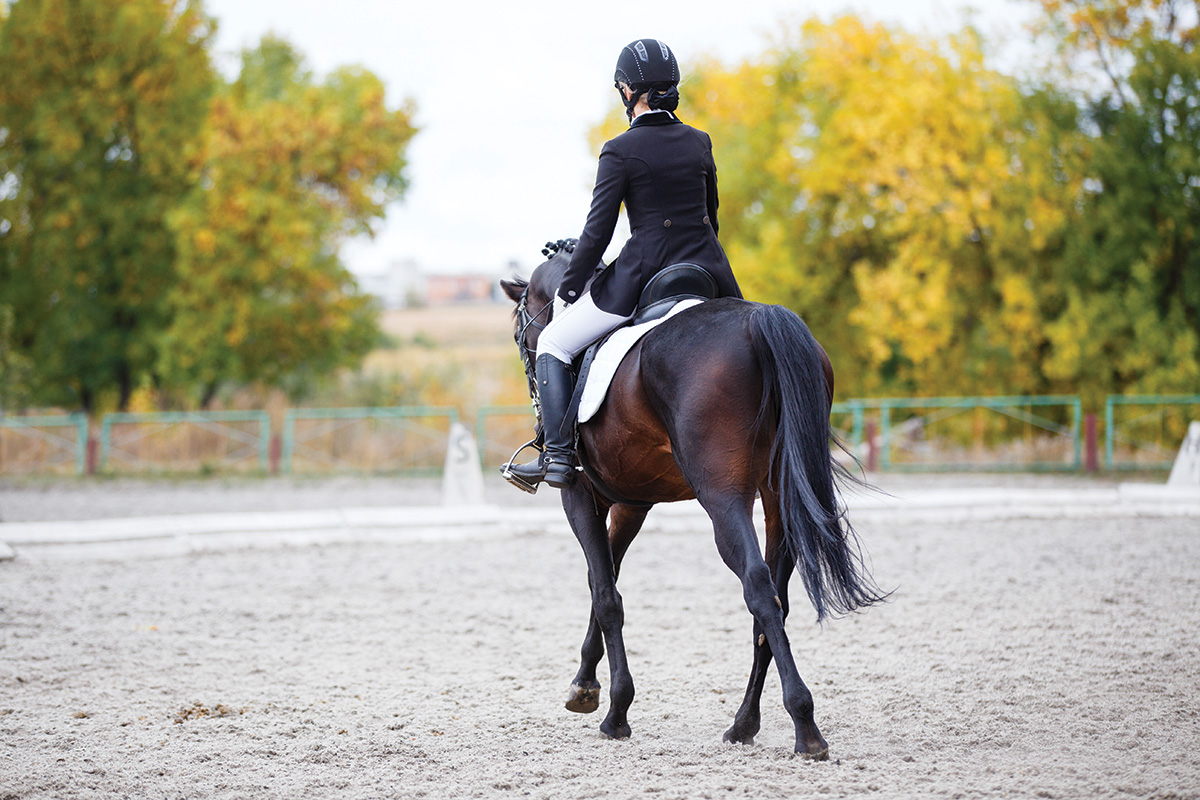
“Work on the center lines and halts, the accuracy of the transitions, the stretchy circle, and the free walk,” Romm says of coaching a competitor with an average-moving horse. “Mathematically, you’ll come out ahead if you can hope to get at least a 7 for your free walk and your stretchy circle, and then you can really nail your halts and hopefully get an 8 or a 9.”
This article about improving your dressage movements appeared in the September 2022 issue of Horse Illustrated magazine. Click here to subscribe!




